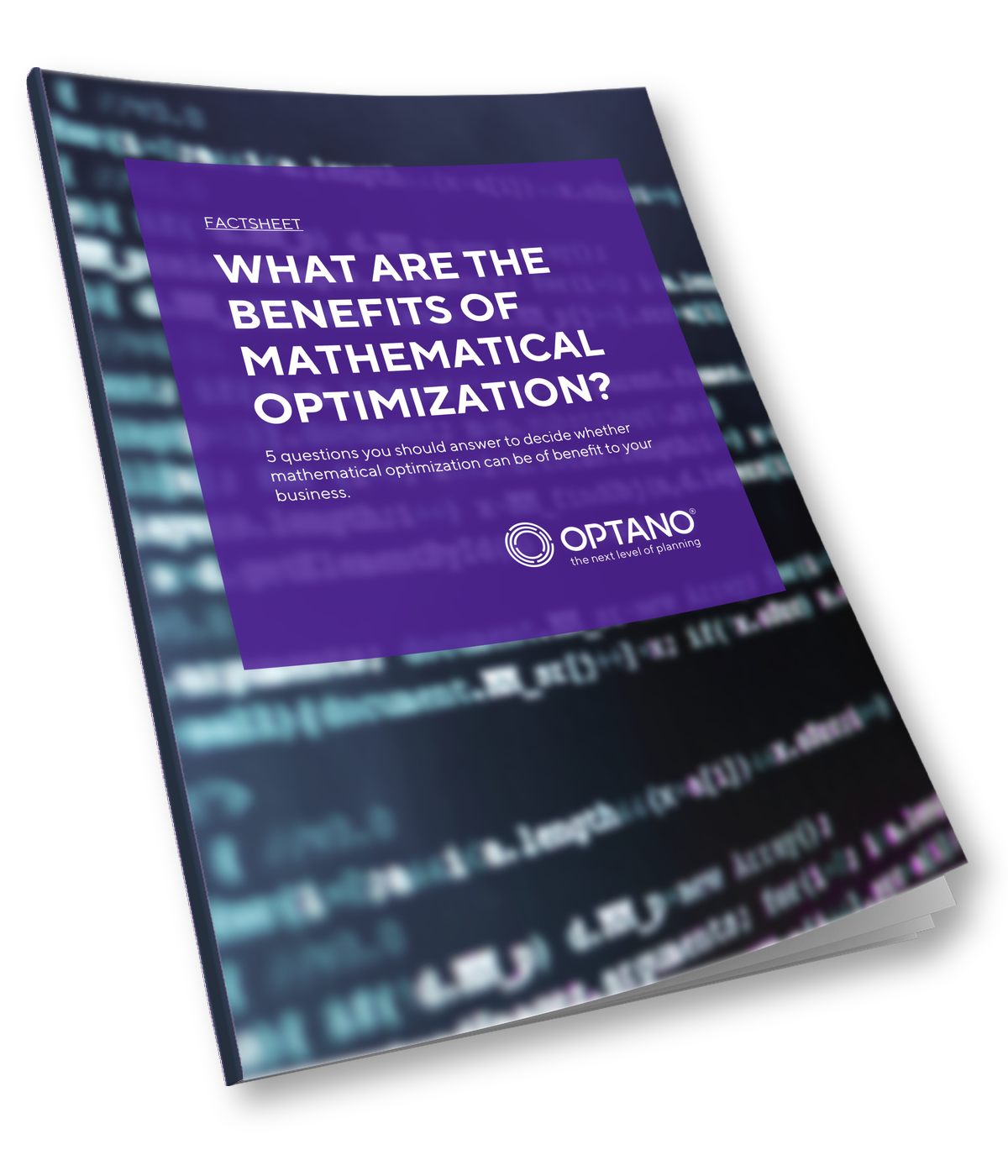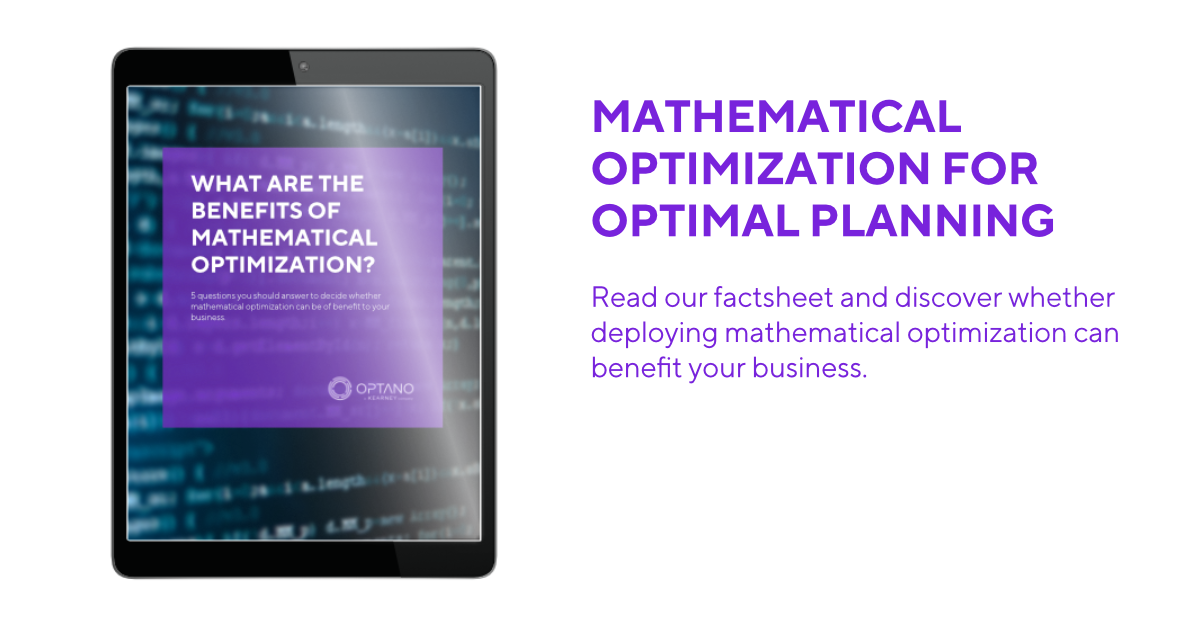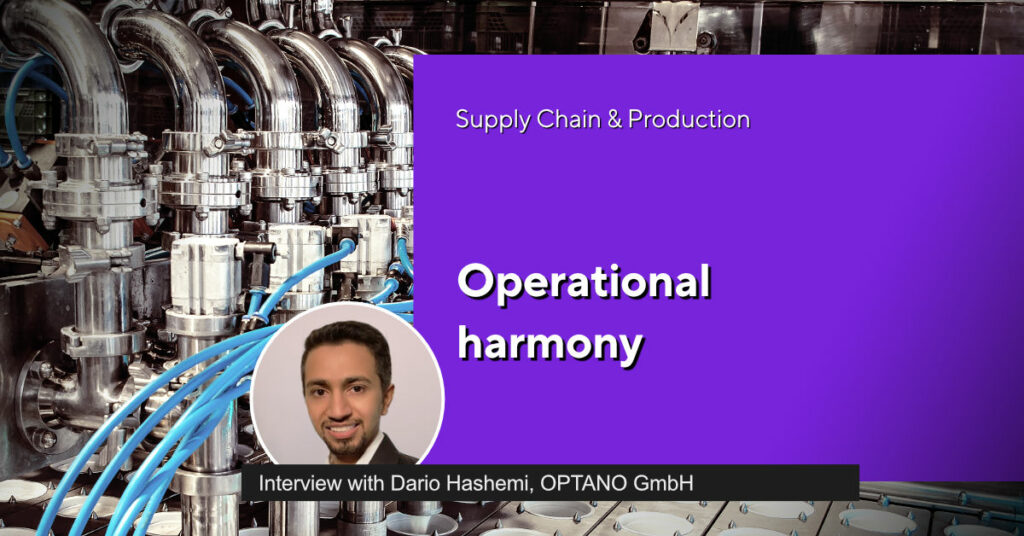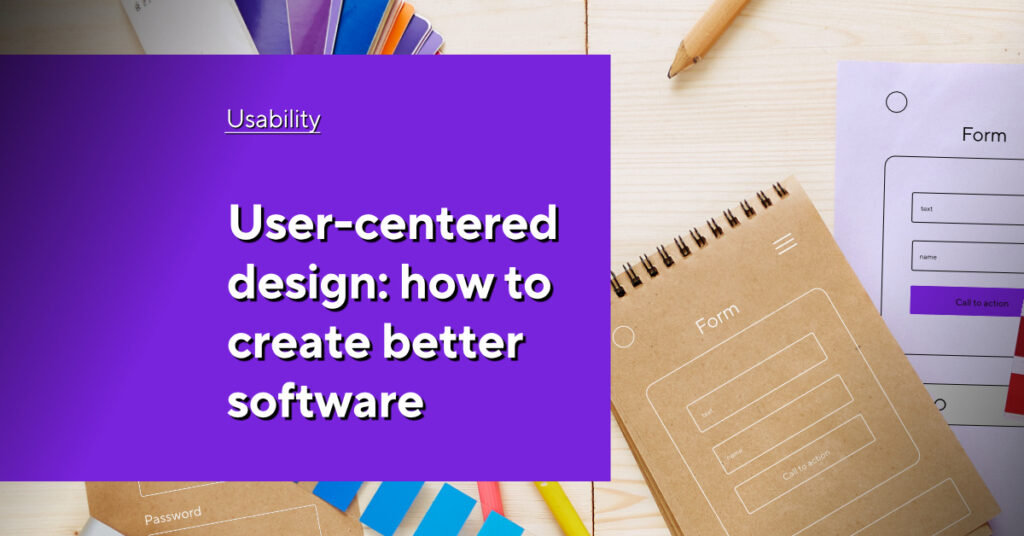Mathematical optimization for small and medium-sized businesses (SMEs)
“Good things come in little bundles!”, so the saying goes. But being small also has its drawbacks. I know because I am a few centimeters below the official average height. I struggle to get items from the top shelf in a store or from the top of the cupboards at home, and at concerts I have trouble seeing the stage because of all the taller people around me.
In business, small to medium-sized companies (SMEs) can also encounter difficulties because of their size. While there are many advantages to being an SME – they can offer a more individulaized service, are often in closer proximity to customers, internal communication is easier, they are said to be more flexible and quicker to adapt to change – however, they have to assert themselves more on the market to keep up. In this article, we want to look at the challenges that SMEs face and explain how they can overcome these and remain just as successful as larger companies.
What is classed as an SME?
The definition of an SME is based, among others, on its staff headcount and annual turnover/revenue. While there is no unified threshold, the EU defines a medium-sized business as having fewer than 250 employees and a smal business as having fewer than 50, whereas this can still vary from one individual EU country to another. In the USA, a company with fewer than 1200 employees can be considered an SME.
The role of SMEs in the economy must not be under-estimated
In the European Union, a massive 90% of businesses are SMEs. These businesses therefore employ most of the EU’s workers and are considered the drivers of added value, investment and innovation. Even so, they are faced with major challenges as far as their competitiveness is concerned. These challenges include:
- Attracting customers: While this is a problem that affects all businesses, no matter their size, SMEs have to focus more on establishing themselves in the market, securing a good reputation and gaining customer confidence in their products far more than large, well-known corporations in the same field whose products are familiar. Maintaining a solid customer base means guaranteeing good quality products at the right price and remaining flexible in a market in which consumers’ needs are subject to volatile change.
- Attracting skilled workers: A company cannot thrive without the employees behind it. However, employees with the skills that SMEs require tend to be attracted to large companies which can offer higher salaries and seemingly offer more job security
- Remaining resilient: Particularly in the last few years, in the light of the pandemic and other crises, SMEs have struggled to remain resilient in a turbulent economic climate. Maintaining profitability and securing revenue is crucial and can only be achieved by balancing conflicting goals such as cutting costs, increasing production and making efficient use of resources, etc.
Bearing in mind the huge number of SMEs, their combined workforce and the revenue they generate, it would be safe to say that their role in the economy is significant and should not be under-estimated. If such companies fail to keep pace in today’s markets, this can have drastic consequences. For this reason, it is more important than ever for SMEs to take measures to confront the above challenges in order to remain competitive – and not just in the face of large corporations. The advantages that a large company has over SMEs should certainly not be taken lightly, but trying to stand out in a market full of similar small or medium-sized businesses in the same field is an even bigger challenge. How can an SME gain the decisive edge here? The answer is digitization…
More interesting articles
Digitization: a challenge in itself
Ironically, though, while SMEs generally regard the adoption of new technologies as key to ensuring that they maintain a competitive foothold in their respective markets, they are still hesitant to take the plunge. In fact, implementing digital transformation is itself the biggest challenge that SMEs are confronted with.
The European SME Survey in 2019 (hence pre-Covid) revealed that although one in two SMEs considered digitization as being crucial to their business success, only one in three were of the opinion that this should be a “top priority” and planned to engage in some forms of digital activity “in the next two years”. At the time of the survey, digital activities which had already been implemented or which were mostly under consideration were electronic invoicing, communication technologies to facilitate teamwork/collaboration and monitoring software. All three activities had already been implemented in over half of the companies questioned and over 20% of companies planned to engage in such activities at a later date.
Post-Covid research into digitization among SMEs by various institutions has revealed that SMEs are taking the issue of digital transformation more seriously. The urgency of digitization has naturally been driven by the upheavals created during the pandemic, above all the sudden move out of the office to setting up makeshift offices at home has led many businesses to upgrade their communications technology as well as improve IT security. However, while such technologies are indispensable, the majority of SMEs are still not exhausting all of the digital possibilities available to them…
Disruptive technology still faces resistance
Even today, after the crises of the past two years such as the pandemic and global supply chain disruptions, the number of SMEs which engage or plan to engage in new technology such as Big Data and AI to optimize processes in production, supply chain management, logistics, etc. remains below 20%. And it is precisely this kind of technology that is needed now more than ever in order to remain resilient. While businesses acknowledge that new software solutions can give them the edge they want to have, they are still hesitant for certain reasons. These being:
- Cost: Investing in new technology is naturally expensive. Many SMEs are still recovering from the effects of the pandemic and are unwilling to make the investment. And while many countries offer subsidies to SMEs to facilitate their digital transformation, many are reluctant to apply for them due to the bureaucracy and uncertainty this entails.
- Security: Many companies are sceptical towards installing new technology in their business as they are concerned about the possible security risks that could occur.
- Lack of skilled employees: Many SMEs lack the necessary personnel to support the new technological infrastructure. This is where they also have to compete with the larger corporations which can offer more attractive salaries and benefits to qualified IT specialists. The alternative is to provide their own employees with the relevant training which also entails costs and takes up valuable productive time.
- Internal resistance: Many SMEs lack the necessary personnel who can manage the new technological infrastructure. Quite often employees have trouble accepting new technology. They try to avoid using it and prefer to stick to the old way of doing things. And there are actually businesses in which management itself is simply resistant to change. “But we’ve always done it like this” is their mantra. Why spend time and money on new technology when the existing methods have proven their worth and acceptance of any new technology is unlikely? This is where they also have to compete with the larger corporations which can offer more attractive salaries and benefits to qualified IT specialists. The alternative is to provide their own employees with the relevant training which also entails costs and takes up valuable productive time.
- New technology solutions are overwhelming: Although many businesses are aware of the fact that new technology can support their business, assessing the benefits and consequences of the various technical solutions on offer can be overwhelming.
Mathematical optimization: the right solution for SMEs?
According to Gartner, by the end of 2024, 75% of organizations will be using artificial intelligence techniques, including optimization, to improve their planning processes, predict future trends and identify risks. The more advanced form of analytics they deploy, the stronger their market position will be.
A powerful tool in this case is mathematical optimization which is already being applied in many areas of business and industry to solve complex planning problems. It is behind the success of many global companies in the fields of energy, telecommunications, logistics, finance and many more as it gives them the means to make optimal decisions in order to achieve maximum efficiency, generate major cost savings and revenue growth.

Are you interested in our factsheet?
What are the benefits of mathematical optimization?
How does mathematical optimization work?
For mathematical optimization to work effectively, it requires information with which it can work. This can be extracted from the wealth of data that has been accumulated on virtually all aspects of a company: historical data such as prices, sales, production, personnel, supply chains and so on. Based on the analysis of this data as well as the model of your business, mathematical optimization can find the right solutions to your real-world problem and enable you to make optimal decisions for the future.
Two components are required to enable the mathematical optimization application to work: the solver and the optimization model. The solver contains a collection of highly sophisticated algorithms which are able to sift through millions, billions, even trillions of possibilities. All the user has to do is insert the solver into the optimization application and it will analyze all the data at its disposal and come up with the right solution in a very short space of time.
The mathematical model is a highly customized, detailed replica of your company’s business problem, containing all the variables, constraints and objectives of your business. By defining your business problem in a mathematical model, the problem becomes quantifiable i.e. can be calculated in mathematical terms. Using the solver, it can come up with the right solution to your specific problem.
Not sure whether mathematical optimization can benefit your small or medium-sized business?
As mentioned above, mathematical optimization requires data – the more the better – to generate optimal results. Not only large corporations accumulate huge amounts of data. An SME can also amass so much data on suppliers, customers, products, production processes, machines, locations and logistics that it becomes difficult to manage. A tool that is able to help you understand and use your data in order to make optimal decisions for now and the future can only be of major benefit in the long term.
If you are still unsure whether mathematical optimization can benefit your business, then consider the five questions below:
- Do you frequently have to revise your plans during a running process?
- Does your business have many cross-dependencies?
- Do you find yourself optimizing towards one or more goals?
- Is it important for you to know how good your plans are?
- Do you have to plan a lot under uncertainty?
If you answered one or more of the above questions with “yes”, then perhaps it is time for you to consider deploying mathematical optimization in your company.
OPTANO - best planning results with the support of a user-friendly application
An optimization platform such as OPTANO deploys mathematical optimization. In this way, you have a sound basis on which to make decisions and find optimal solutions for your planning challenges. Whether it’s in production planning, supply chain management, deployment and route planning and many other areas, OPTANO makes your planning processes efficient, fast and flexible saving you time and money in the long run.
And that’s not all: with OPTANO you have a highly sophisticated yet user-friendly application at your disposal which functions as both a desktop and web application and is characterized by its transparency and intuitiveness. Our experts here at OPTANO not only support the business during the entire integration of the platform into a company’s system but also beyond and provide the training required to use the platform. OPTANO integrates seamlessly into your existing IT- infrastructure and since its features are very similar to Office applications, employees can quickly get used to using the platform.This guarantees the fast acceptance of the new technology at management and employee level: A one-time investment that definitely pays off in the long run in every respect – for both large, small and medium-sized companies!
Size really doesn't matter
Going back to size: Yes, sometimes it is annoying if I cannot reach the top shelf in a supermarket. But then I ask somebody if they can get it for me. If I cannot see at a concert or at the movies, I move to a place where I can. Being smaller is not an obstacle. There are always ways to get around a difficulty. And this also applies to SMEs. They may not be a large multi-national corporation, but they hold a lot of potential and, by using mathematical optimization, they can unleash this to remain strong in their respective market.
Have you got your copy of our factsheet on this topic yet?

In our factsheet “What are the benefits of mathematical optimization?” we ask 5 questions to help you assess whether mathematical optimization brings benefits to your organization.
To obtain our factsheet, all you need to do is enter your contact details in the space below. A pop-up window will then open to download the whitepaper. Please note that by providing us with your email address, you agree that we may contact you on this topic. You may revoke this agreement at any time by contacting [email protected].







